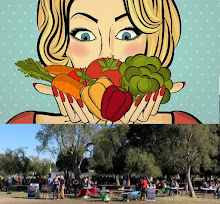WARNING: Narrator mispronounces nearly every Buddhist term he uses as if they were phonetic.
 |
| The Buddha vs. Budai vs. Cosmic Amitabha |
In the older, more focused Theravada tradition, only the historical person Siddhartha Gautama is THE Buddha, though there have been and will be other buddhas in the past (at least 28 of them) and in the distant future (one of them named Maitreya or Metteyya). All the other figures arise out of the watered-down reform movement that is the "Great Vehicle" (Mahayana) that is a collective term for everything else. And lest anyone should be confused, there are no extant Hinayana ("Lesser Vehicle") schools or sects (like the Sarvastivadins) left, all having been pushed into extinction by the Mahayana movement. Theravada, a back-to-basics movement concerned with what the historical Buddha taught rather than later developments or additions, is not a Hinayana school, but as there are no Hinayana schools left, it gets called one anyway by know-it-alls who are not too concerned with facts or details.
Is Buddhism spoken in every Asian language?
The Buddhist language
It is also crucial to point out that there are at least two Buddhist languages, Pali (Magadhi) and Sanskrit, and the two schools use different ones. This can be confusing because they are so similar. The reason there are two is because Pali was what ordinary people spoke, the lingua franca of the Buddha's day. Sanskrit was exclusively the language of elitist temple priests known as Brahmins, who regarded themselves as the upper crust and a members-only old boys club. Their sacred books, the Vedas, are in this ancient secret language, once spoken only by them, just as Catholic priests (popes, cardinals, bishops, etc.) managed all their official affairs in Latin, leaving Spanish and Italian and other related languages for the commoners. Because ex-Old Vedic Religion Brahmins were dealing with Buddhism, there came to be a Buddhist Hybrid Sanskrit. There are many languages used by Buddhists, according to their country, but one can easily tell if one is dealing with Theravada Buddhism: Its root texts are all in Pali. Now that many Sanskrit terms (like karma, mantra, avatar, ayurveda, mandala, dharma, sutra) have crossed into English, the lines are blurry. Pali must have had many dialects and regional differences. One of the most important is the Gandhari script, Kharosthi, in which the oldest existing Buddhist texts are written. The Buddha was NOT from India but from Gandhara. How can we be sure? There was no India yet, only different kingdoms, republics, and territories that were later united by Buddhist Emperor Ashoka into a single country (Bharat or Great Bharat). This union may have existed before in antiquity, but it did not exist at the time of the Buddha. He was also not from Nepal, as he is now placed. He was a Saka (Scythian, Shakya, Sakka, Sakai) from Gandhara (Afghanistan/Pakistan area). He did travel to, become enlightened in, and teach in proto-India, and out of laziness or not to be pedantic, we call Magadha and Bihar and places he stayed "India." But it is interesting to always bear in mind that it is because he was a foreigner and an outsider that nativists like Sri Shankara who systematized the diverse spiritual traditions of "Greater India" (the whole Indus Valley Civilization and Mahabharata and neighboring areas) that came to be called by the occupying British interlopers "Hinduism" (Indus-ism, all the different and unrelated things people were and are practicing around the Indus river valley) as a whole. Prior to Sri Shankara, there was on consensus or unifying label for disparate views and daily observances. Prior to British influence, there wasn't even the idea of "religion," as most people here and around the world (like the Egyptians and shamans) did not make a distinction between daily life and customs and "religion" or beliefs; they were the same thing, just life.
Buddhist Denominations Explained | Theravada vs. Mahayana
SOURCES
- Skilton, A. (1994). A Concise History of Buddhism. Cambridge: Windhorst.
- Strong, J. S. (2015). Buddhisms: An Introduction. London: Oneworld
- Charts and narration by Matt Baker
- Animation by Syawish Rehman
- Audio editing by Ali Shahwaiz
Theme music: "Lord of the Land" by Kevin MacLeod and licensed under Creative Commons Attribution license 4.0. Available from incompetech.com
PRODUCT
UsefulCharts tagged product is a World Religions Family Tree Poster ($25.00) usefulcharts.com/products/world-religions-family-tree... Click: blinkist.com/usefulcharts to get 40% off Blinkist’s Annual premium and enjoy the collection. Start a 7-day free trial now. Buy the poster version of the chart: usefulcharts.com.
- Matt Baker, UsefulCharts, 1/12/24; text by Pat Macpherson, Dhr. Seven, Amber Larson (eds.), Wisdom Quarterly


















































































































































































































































No comments:
Post a Comment